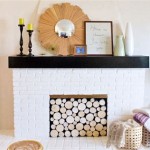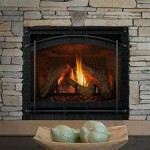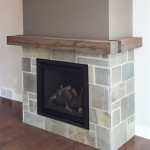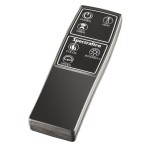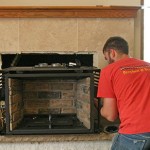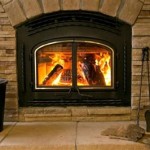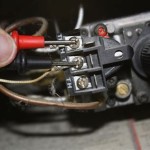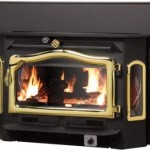Corner Fireplace Gas: A Comprehensive Guide
Corner fireplaces are a popular design choice for homeowners looking to maximize space while adding a focal point to a room. A corner fireplace gas model offers the aesthetic appeal and warmth of a traditional fireplace combined with the convenience and efficiency of gas fuel. This article delves into the various aspects of corner fireplace gas installations, covering design considerations, installation processes, fuel efficiency, safety features, and maintenance requirements.
Design Considerations for Corner Gas Fireplaces
Choosing the right corner gas fireplace involves numerous design considerations to ensure it complements the room's overall aesthetic and meets the homeowner's specific needs. The size of the room, the existing décor, and the desired style all play a crucial role in the selection process.
One of the primary considerations is the fireplace's size. A fireplace that is too large can overwhelm a small room, while one that is too small may not provide sufficient heat or visual impact in a larger space. Measuring the corner and the surrounding area is essential to determine the appropriate dimensions for the fireplace unit. Consider the viewing area as well. A wide viewing area offers a more expansive display of the flames, enhancing the visual appeal.
The architectural style of the room is also a significant factor. For modern homes, sleek, minimalist designs with clean lines and stainless-steel accents are often preferred. Traditional homes may benefit from more ornate designs with detailed mantels, brick surrounds, or classic color palettes. Transitional styles blend elements of both modern and traditional design, offering versatility in terms of aesthetic choices.
The fireplace surround and mantel provide opportunities to further customize the look of the fireplace. Options range from natural stone and brick to wood and tile. The mantel can serve as a display area for decorative items, adding a personal touch to the fireplace. Careful consideration should be given to the materials used, as they can significantly impact the overall appearance and ambience of the room.
Ventilation options also influence the design. Direct-vent fireplaces, which draw air from outside and vent exhaust gases directly outdoors, offer greater flexibility in terms of placement and installation. Vent-free fireplaces, which do not require venting, may be an option in certain areas, but local building codes should be consulted to ensure compliance and safety.
Finally, consider the placement of furniture and other elements in the room. The fireplace should be positioned in a way that allows for comfortable seating and unobstructed views of the flames. Avoid placing furniture too close to the fireplace, as this can pose a safety hazard. Thoughtful planning will ensure that the corner gas fireplace becomes a cohesive and functional part of the room's design.
Installation Process of a Corner Gas Fireplace
The installation of a corner gas fireplace is a complex process that requires careful planning and adherence to safety regulations. It is highly recommended that a qualified and licensed professional perform the installation to ensure proper functionality and safety.
The initial step involves determining the appropriate location for the fireplace. This requires assessing the availability of gas lines, the proximity of electrical outlets, and the structural integrity of the corner. Gas lines must be properly sized and installed to ensure adequate gas supply to the fireplace. Electrical outlets are needed to power the blower, ignition system, and other features of the fireplace.
Once the location is determined, the installer will prepare the corner by framing the area to accommodate the fireplace unit. This may involve building a platform or reinforcing the existing structure to provide adequate support. The framing must be constructed using fire-resistant materials to prevent the spread of fire.
The next step is to install the gas line and electrical wiring. A qualified plumber should handle the gas line installation to ensure proper connection and leak prevention. An electrician should handle the electrical wiring to ensure proper grounding and compliance with electrical codes. All connections must be tested for leaks and proper functionality before proceeding.
The fireplace unit is then carefully positioned into the framed opening. The unit must be level and securely anchored to the surrounding structure. The venting system is then connected to the fireplace and routed to the exterior of the building. The venting system must be properly sealed to prevent the escape of exhaust gases into the home. For direct-vent fireplaces, the vent must extend through the wall and terminate outside, following manufacturer specifications.
After the fireplace unit and venting system are installed, the surround and mantel are added. The surround is typically constructed of non-combustible materials such as stone, brick, or tile. The mantel can be made of wood or other materials, but it must be installed at a safe distance from the fireplace opening to prevent overheating. All materials used must comply with local building codes and fire safety regulations.
Finally, the fireplace is tested to ensure proper functionality. The installer will check the ignition system, flame height, blower operation, and venting system. A carbon monoxide detector should be installed in the room to provide an additional layer of safety. The homeowner should be provided with instructions on how to operate and maintain the fireplace safely.
Fuel Efficiency, Safety Features, and Maintenance
Corner gas fireplaces offer a combination of fuel efficiency, safety features, and convenience. Understanding these aspects is crucial for homeowners to make informed decisions and maintain their fireplaces properly.
Gas fireplaces are generally more fuel-efficient than traditional wood-burning fireplaces. They can provide consistent heat output and are easily controlled with thermostats or remote controls. Modern gas fireplaces are designed with advanced burner technology and heat exchangers to maximize energy efficiency. The efficiency rating of a gas fireplace is typically expressed as an annual fuel utilization efficiency (AFUE) percentage, which indicates the percentage of fuel that is converted into usable heat. Higher AFUE ratings indicate greater energy efficiency.
Several safety features are incorporated into gas fireplaces to prevent accidents and ensure safe operation. These features include oxygen depletion sensors (ODS), which automatically shut off the gas supply if the oxygen levels in the room become too low. Pilot light systems provide a constant flame that ignites the main burner. Safety screens or glass doors prevent accidental contact with the flames and protect against sparks and embers. Pressure relief valves prevent excessive pressure buildup in the gas lines.
Regular maintenance is essential to ensure the safe and efficient operation of a corner gas fireplace. The fireplace should be inspected annually by a qualified technician. The technician will check the gas lines for leaks, inspect the burner and pilot light, clean the venting system, and ensure that all safety features are functioning properly. The burner should be cleaned regularly to remove any debris that may obstruct the flame. The glass door or screen should be cleaned with a non-abrasive cleaner to maintain visibility. The area around the fireplace should be kept clear of flammable materials.
The venting system should be inspected periodically to ensure that it is free of obstructions. Birds' nests, leaves, and other debris can block the vent and cause carbon monoxide to build up in the home. Carbon monoxide detectors should be installed in the home and tested regularly to provide an early warning in case of a carbon monoxide leak. The batteries in the carbon monoxide detectors should be replaced annually.
Homeowners should familiarize themselves with the operating instructions for their gas fireplace and follow all safety guidelines. Never tamper with the fireplace or attempt to make repairs without the assistance of a qualified technician. If any unusual odors or sounds are detected, the fireplace should be turned off immediately, and a technician should be called to investigate. Proper maintenance and adherence to safety guidelines will ensure that the corner gas fireplace provides years of safe and reliable warmth and enjoyment.
Corner Two Sided Gas Fireplace Heat Glo

Lx2 3 Sided Corner Gas Fireplace Natural The Center

Corner Ventless Gas Fireplace Visualhunt

Chicago Corner 40re Designer Gas Fireplace Regency

Corner Fireplaces Modern Gas The Davinci Collection

Vantage Hearth Direct Vent Gas Corner Fireplace

Hottest Snap Shots Corner Gas Fireplace Strategies Almost As Much All Of Us Protest Wi Stone Electric

The Corner Gas Fireplace A Great Way To Maximize Your Space

Corner Series Direct Vent Gas Fireplace By Majestic S Fireplaces

Vantage Hearth B Vent Gas Corner Fireplace
Related Posts

